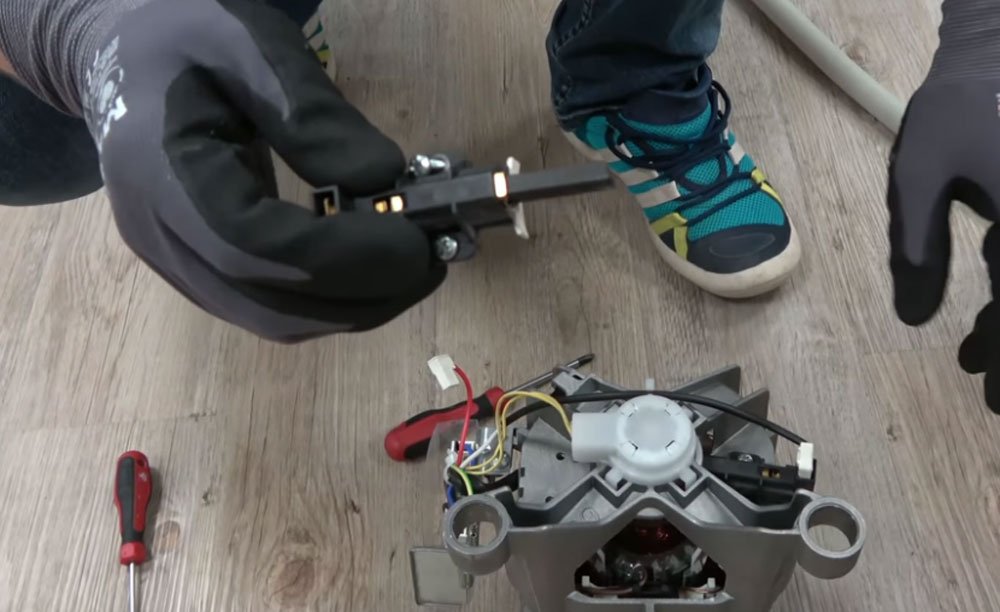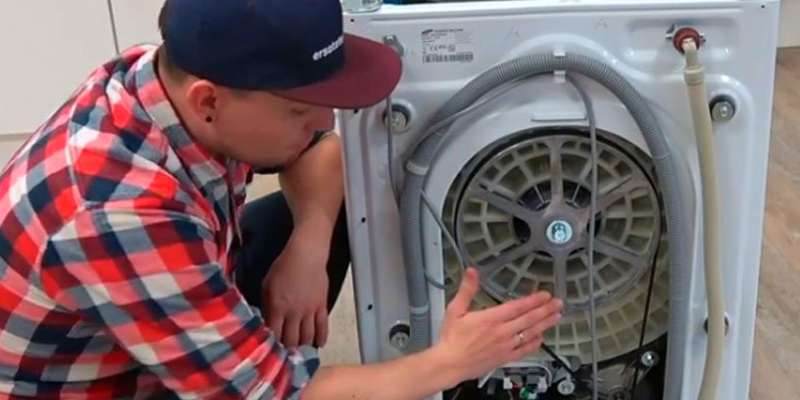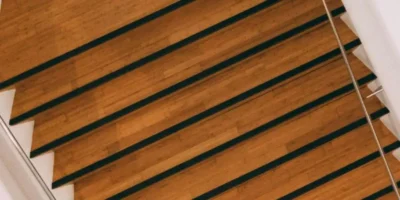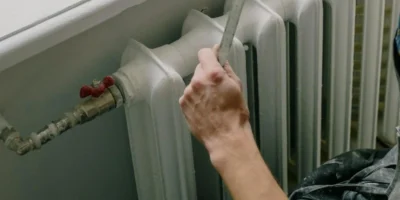How do you fix a washing machine that won’t rotate? This be caused by various problems. We outline the most common causes and how to fix them.
Find more repair guides, tips and advice
Find more home guides, tips and advcie
The laundry is in the washing machine, the device can be switched on – but the drum just does not want to move? Don’t panic: you’re not alone with this problem. So that the laundry can be done, your skill as a handyman or handywoman is required.
Just follow the tips below for the most common problems fix a washing machine that won’t rotate, and watch the detailed repair videos for extra help. And you can also often find videos on Youtube that relate to repairs of your specific brand of washing machine.
To fix a washing machine that won’t rotate: common causes
1. The drive belt is worn or loose
The most common reason why a drum stops rotating is a broken drive belt. Similar to the V-belt of the car, the drive belt of a washing machine (as shown in our main image) is subjected to constant stress. Signs of wear are completely normal. You can find the drive belt on the back of the washing machine. It connects the motor shaft to the pulley. This in turn drives the drum and sets it in motion. Before the drive belt breaks completely, small cracks form. This can cause the belt to lose tension and slip off the pulley due to the vibrations of the spinning process.
We recommend: Remove the back wall of the washing machine and check the drive belt for damage. If you find any cracks, you should replace them promptly.
The video below shows where the pulley and drive belt are and how these components can be replaced.
2. The drum bearing is damaged
The second most common reason for a non-rotating laundry drum is a defective drum bearing. It is located behind the pulley, on the back of the washing machine. If, for example, water comes out of the drum due to damaged shaft seals, the bearing can rust. This in turn leads to the component jamming and the gear no longer being able to move the drum.
We recommend that you can easily check whether the drum bearing is broken:
try to turn the laundry drum manually. Do you feel unusual resistance? If so, you should replace the component as soon as possible. You need some manual skill for the repair. In this video we explain how to do it.
3. The pulley is broken

Another component that is essential for driving the washing machine is the pulley. The drive belt, which transmits the power of the engine, rests on it. If the belt pulley is broken or torn, the drive belt may no longer fit properly and the force required to move the laundry drum may be lost.
We recommend: Check the back of your washing machine to see if the pulley is damaged. If this is the case, the component must be replaced urgently.
4. The carbon brushes are worn out

The drive motor is the heart of your washing machine. If it no longer works, there can of course be no rotary movement. This is a robust component that rarely fails completely. However, the carbon brushes are also located here – and these are classic wear parts.
We recommend: New carbon brushes are very cheap to buy. You should replace them first before you declare the motor of your washing machine dead. The repair is not easy, but with these video instructions you do not need to be afraid of it.
In contrast to the complete replacement of the engine, changing the carbon brushes is an inexpensive repair measure.
5. The drive motor is defective
As mentioned above, the washing machine motor is very robust and rarely breaks. A multimeter can be used to determine whether the electric motor is still working or not.
We recommend: It is best to ask a technician for advice – because knowledge of electrical engineering is essential here. Can the engine really be saved? Then you should consider carefully whether a repair of your washing machine is still worthwhile. After all, the drive motor is one of the most expensive components and the exchange is quite complex. From a purely economic point of view, the motor should only be replaced if the device is not yet 6 years old.
6. Small items got caught between drum and tub
Who doesn’t know it: socks, bra underwire and other small items disappeared without a trace after washing . But since reality is based on the laws of physics, the lost things must have stayed somewhere. There is a small gap between the tub and the laundry drum, which is located at the front of the rubber lip. During the washing process, small items of laundry occasionally slip into this gap and disappear. This in turn can cause grinding noises or, in the worst case, even block the movement of the drum.
We recommend: Remove the back wall of your washing machine and remove the heating element. With a wire and a little skill you can get between the drum and the tub and remove the stucklaundry.
If you remove the back wall and the heating element of the washing machine, you can reach the cavity between the drum and the tub and look for lost items of laundry here.
Kitchen and household appliances are comparatively expensive to buy. The shock is correspondingly great when a device is broken or no longer works properly. Fortunately, many problems can be solved with the right spare part and a few practiced steps.
 Gerhardt Richter is a writer and a trainer at trade technical colleges, specializing in carpentry, plumbing, mechanics and construction.
Gerhardt Richter is a writer and a trainer at trade technical colleges, specializing in carpentry, plumbing, mechanics and construction.




